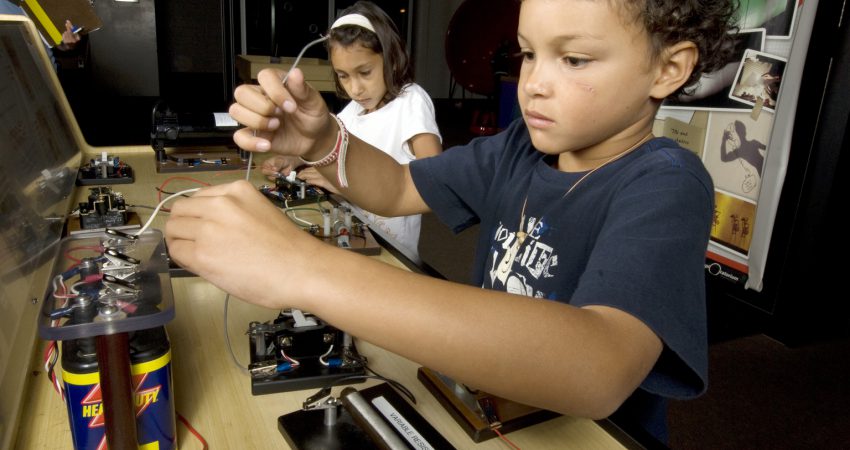
By Heather King - July 2014
PAPER CITATION
Dohn, N. B. (2013). Situational interest in engineering design activities. International Journal of Science Education, 35(12), 2057–2078. doi:10.1080/09500693.2012.757670
Prior research studies have intimated that engineering design activities can enhance students’ understanding of engineering and technology and can increase their interest in science. Few papers, however, have defined or measured this interest empirically. Indeed, students may equate “interesting” with “fun” or “fascinating” and not necessarily with “motivating.” Furthermore, few researchers have focused on how interest may be triggered. In this study, Dohn sought to capture both the psychological aspects of situational interest, as represented by the individual’s experience, and the social aspects of interest, as represented by the student’s participation in shared practice.
Theoretical Basis
Most studies exploring interest make a distinction between individual or personal interest on the one hand and situational interest on the other. Individual interest refers to a person’s continued predisposition to engage with content over time. Situational interest describes affective interest that is generally triggered by environmental stimuli (Krapp, 2002). Situational interest may be further divided into triggered and sustained interest. Sustained interest is the deeper and more committed form of situational interest in which the individual forms a meaningful connection to the content.
Research Design
The study involved 46 students, aged 12–14, in two classes of students, both taught by the same teacher. For a project culminating in an interschool competition, students could choose from a variety of open-ended engineering design problems. Over the eight weeks of the project, Dohn observed all the lessons, recording time spent on task, the amount of focused and intense attention, students’ expressions of a desire to revisit ideas, and any verbal expressions of positive affect. The author also conducted 81 short conversational interviews with the students, using questions such as “How did you experience that situation just now?” He asked a smaller number of students to describe their goals, learning strategies, and interpretations of the learning environment. Finally, in the last week of the project, students completed a self-reported interest survey, which explored themes identified in the previous seven weeks.
Research Findings
The analysis revealed four main sources of situational interest in students: designing inventions, trial-and-error experimentation, making their inventions work, and collaboration. These sources were inductively derived from the observation data and validated through the interest survey.
The effect on interest of being able to design inventions may reflect the importance of providing students with autonomy and freedom. In his theory of self-determination, Deci (1992) refers to the inherent psychological need for autonomy.
The role played by trial-and-error experimentation reflects the importance of both autonomy and self-regulation of interest, including the ability to make boring tasks more interesting. For students with low self-regulation skills, however, too much autonomy can be confusing. For those students, the teacher needs to scaffold tasks carefully.
Students’ excitement and pride when inventions worked as intended was another source of interest, one associated with mastering a particular goal.
Finally, collaboration speaks to the importance of social contact. As self-determination theory asserts, individuals have a basic need for social interaction and thus social contact can arouse interest and engagement.
In his discussion of findings, Dohn notes that careful scaffolding is essential for any successful engineering design activity. Educators must develop tasks with students’ prior knowledge in mind. If a task involves too much novel information, the learner’s working memory becomes overloaded. Dohn also notes that the final interschool competition had the effect of amplifying student emotions: If their invention worked well, the competitive element of the project enhanced their enjoyment; if their invention did not work, the competition increased their expressions of boredom.
Implications for Practice
This paper points to the benefits of giving learners opportunities to engage in design experiments and design challenges as a way of prompting interest. To address self-regulation issues, informal science institutions could develop outreach and school-based activities that include suggestions for guidance of various amounts, from enabling full autonomy to giving substantial guidance in order to support student confidence. In addition, informal science institutions could offer design-based professional development programmes focused on developing content knowledge and pedagogical knowledge, thus equipping both formal and informal educators with the skills to scaffold learner engagement appropriately and flexibly.
References
Deci, E. E. (1992). The relation of interest to the motivation of behaviour: A self-determination theory perspective. In K. A. Renniger , S. Hidi, & A. Krapp (Eds.), The role of interest in learning and development (pp. 43–70). Hillsdale, NJ: Erlbaum.
Krapp, A. (2002). Structural and dynamic aspects of interest development: Theoretical considerations from an ontogenetic perspective. Learning and Instruction, 12(4), 383–409.




